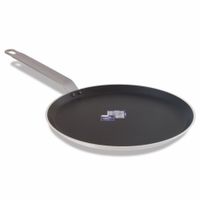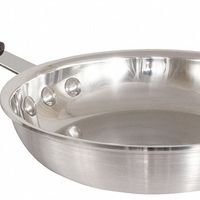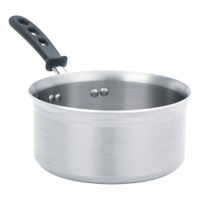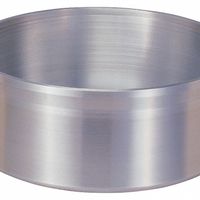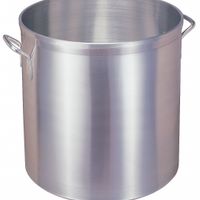Call +(254) 703 030 000 / 751 483 999 / 721 704 777
.....Read More
Frequently Asked Questions
What is the best material for a stock pot?
Stainless steel is often considered the best material for a stock pot due to its durability, resistance to rust and corrosion, and non-reactive nature, which ensures that it won't alter the taste of acidic ingredients. It provides even heat distribution, especially when combined with an aluminum or copper core, which enhances its thermal conductivity. This combination allows for efficient cooking and prevents hot spots, making it ideal for simmering stocks and soups over long periods. Additionally, stainless steel is easy to clean and maintain, often being dishwasher safe. Its robust construction can withstand high temperatures and is compatible with all stovetops, including induction. While other materials like aluminum, copper, and cast iron have their advantages, stainless steel offers a balanced combination of performance, longevity, and ease of use, making it a preferred choice for both home cooks and professional chefs.
How do you properly season a frying pan?
1. **Choose the Right Pan**: Use a cast iron or carbon steel pan, as these materials benefit most from seasoning.
2. **Clean the Pan**: Wash the pan with warm water and mild soap to remove any factory coating or residue. Dry thoroughly with a towel.
3. **Preheat the Oven**: Set your oven to 450°F (232°C).
4. **Apply Oil**: Use a high smoke point oil like flaxseed, canola, or vegetable oil. Pour a small amount onto the pan and use a cloth or paper towel to spread a thin, even layer over the entire surface, including the exterior and handle.
5. **Remove Excess Oil**: Wipe off any excess oil with a clean cloth or paper towel. The pan should appear dry, not greasy.
6. **Heat the Pan**: Place the pan upside down on the middle rack of the preheated oven. Place a baking sheet or aluminum foil on the lower rack to catch any drips.
7. **Bake**: Let the pan bake for 1 hour. This process allows the oil to polymerize, forming a hard, protective layer.
8. **Cool Down**: Turn off the oven and let the pan cool inside the oven to room temperature.
9. **Repeat**: For best results, repeat the oiling and baking process 2-3 times to build up a strong seasoning layer.
10. **Maintenance**: After each use, clean the pan with hot water and a brush or sponge. Avoid soap. Dry thoroughly and apply a light coat of oil to maintain the seasoning.
11. **Storage**: Store in a dry place to prevent rust. If stacking, place a paper towel between pans to protect the surface.
What is the difference between a wok and a frying pan?
A wok and a frying pan are both essential cooking tools, but they differ in design, function, and usage.
A wok is a round-bottomed cooking vessel originating from China, typically made of carbon steel or cast iron. Its high, sloping sides and wide top allow for even heat distribution and quick cooking. The shape is ideal for stir-frying, as it enables food to be tossed easily and cooked quickly at high temperatures. The wok's design also makes it versatile for steaming, deep-frying, boiling, and braising. Woks often have a single long handle or two loop handles, and they require seasoning to maintain a non-stick surface and prevent rust.
In contrast, a frying pan, also known as a skillet, has a flat bottom and lower, flared sides. It is commonly made from materials like stainless steel, non-stick coated aluminum, or cast iron. Frying pans are designed for tasks like frying, searing, and browning foods. The flat surface provides even contact with the heat source, making it suitable for cooking foods that require a stable surface, such as pancakes or eggs. Frying pans usually have a single long handle and are available in various sizes.
The primary differences lie in their shape and cooking techniques. A wok's round bottom and high sides make it ideal for high-heat, quick-cooking methods, while a frying pan's flat surface is better for even, moderate-heat cooking. The choice between the two depends on the cooking style and the type of dish being prepared.
How do you prevent sauces from sticking in a saucepan?
To prevent sauces from sticking in a saucepan, start by selecting the right cookware. Use a non-stick or heavy-bottomed pan, which distributes heat evenly and reduces the risk of sticking. Before adding ingredients, preheat the pan over medium heat, then add a small amount of oil or butter to create a barrier between the sauce and the pan's surface.
Stir the sauce frequently with a wooden spoon or silicone spatula to prevent it from settling and sticking. Adjust the heat to maintain a gentle simmer rather than a vigorous boil, as high heat can cause sauces to stick and burn. If the sauce begins to thicken too quickly, add a small amount of liquid, such as water, broth, or wine, to maintain the desired consistency and prevent sticking.
For dairy-based sauces, consider using a double boiler to provide gentle, indirect heat, reducing the risk of sticking. When making tomato-based sauces, add a pinch of sugar to balance acidity, which can contribute to sticking.
If the sauce contains sugar or other ingredients prone to caramelization, monitor it closely and stir more frequently. Deglaze the pan with a splash of liquid if you notice any sticking, using a spatula to gently lift any bits from the bottom.
Finally, clean the saucepan thoroughly after each use to remove any residue that could contribute to sticking in future cooking sessions.
What is the best way to clean a sauté pan?
1. **Cool Down**: Allow the sauté pan to cool to room temperature to prevent warping.
2. **Remove Residue**: Use a paper towel or soft cloth to wipe away excess oil and food particles.
3. **Soak**: Fill the pan with warm water and a few drops of dish soap. Let it soak for 15-30 minutes to loosen stuck-on food.
4. **Scrub**: Use a non-abrasive sponge or soft brush to gently scrub the pan. Avoid steel wool or harsh scrubbers that can damage the surface.
5. **Tackle Stubborn Stains**: For persistent stains, create a paste with baking soda and water. Apply it to the stains and let it sit for 15 minutes before scrubbing.
6. **Rinse**: Thoroughly rinse the pan with warm water to remove soap and residue.
7. **Dry**: Use a soft towel to dry the pan immediately to prevent water spots and maintain the finish.
8. **Polish (Optional)**: For stainless steel pans, use a stainless steel cleaner or a mixture of vinegar and water to restore shine.
9. **Season (If Applicable)**: For cast iron or carbon steel pans, apply a thin layer of oil to the surface and heat it gently to maintain seasoning.
10. **Store Properly**: Ensure the pan is completely dry before storing to prevent rust or damage.
Can you use a crepe pan for other types of cooking?
Yes, a crepe pan can be used for other types of cooking. Its flat, non-stick surface and low sides make it versatile for various tasks. You can use it to make pancakes, omelets, and fried eggs, as the even heat distribution ensures consistent cooking. It's also suitable for toasting sandwiches or quesadillas, as the flat surface allows for easy flipping and even browning.
The pan can be used for sautéing vegetables or cooking small pieces of meat, like chicken strips or shrimp, due to its quick heating properties. However, its low sides may not be ideal for dishes that require stirring or contain a lot of liquid, like stews or sauces.
Additionally, the crepe pan can be used for reheating leftovers, as its non-stick surface prevents food from sticking and burning. It's also useful for making flatbreads or tortillas, as the even heat helps achieve the right texture.
While a crepe pan is versatile, it's important to note that it may not replace deeper pans or pots for certain recipes, especially those requiring more depth or liquid capacity.
What size stock pot is best for making soups and stews?
A 6 to 8-quart stock pot is generally considered the best size for making soups and stews. This size is versatile enough to handle a variety of recipes, from small to medium batches, and is suitable for most home cooking needs. It provides ample space for ingredients to simmer and develop flavors without overcrowding, which is crucial for achieving the best taste and texture in soups and stews.
For larger families or those who enjoy batch cooking and freezing leftovers, a 10 to 12-quart stock pot might be more appropriate. This size allows for making larger quantities, which is ideal for entertaining or meal prepping. However, it requires more storage space and may be cumbersome for everyday use if not needed.
Conversely, for individuals or small households, a 4 to 5-quart pot might suffice, but it limits the quantity you can prepare at once.
Ultimately, the best size depends on your cooking habits, the number of people you typically cook for, and your storage capacity.
